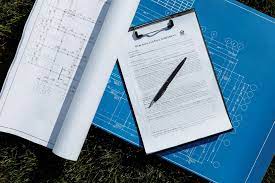If a property is purchased by availing a mortgage or if it has been pledged, the lender will add a “Lien” or a charge to the property. This will ensure that the borrower/property owner does not sell the property until the mortgage is paid in full.
An Encumbrance Certificate is a legal document which will help you find out if there are any charges made on the property – financial or legal. You can avail an EC by visiting the respective Sub-Registrar’s Office.

Encumbrance Certificate Meaning
An encumbrance certificate shows that a particular property is free of legal and financial conflict, can help settle any claims. The certificate shows property ownership and contains a history of recorded transactions (dating back up to 30 years), changes in inheritance, and, if applicable, fraud and litigation information.
Types of encumbrance certificates
There are two types of encumbrance certificates. They are:
- Form 15
- Form 16
Form 15: If a property has any transaction relating to inheritance, sale, purchase, lease, loan, gifting, relinquishment, or partition, the SRO issues an encumbrance on Form 15.
Form 16: If a property has not registered any encumbrances or transactions when the applicant has applied for a certificate, the SRO grants an encumbrance on Form 16. A nil-encumbrance certificate is another name for Form 16.
Why is an Encumbrance Certificate Required?
Before buying a property, you must ensure that the property has a clear title. Getting an Encumbrance Certificate will assure you that the property you wish to buy is free from such financial or legal liability. If you notice a charge on the EC, it is important to rectify it before you make the purchase. It will also help you find out if there are any existing owners who can legally claim the property.
Documents Required to Get the EC Encumbrance Certificat
- Application Form.
- Address verification document (attested copy).
- A photocopy of any previously executed property deeds, such as sale deeds, gift deeds, partition deeds, and release deeds.
- Property Details and Title Deed.
- Aadhar card.
- Registered deed number, date, book number, volume/CD number, and the applicant’s signature.
How to Apply for an Encumbrance Certificate Online
- Visit the respective State’s official land registration website and select the option to apply for an EC.
- Enter all the required fields on the application for encumbrance certificate window, then click save/update.
- Enter the search period for which you require the EC and then click on ‘Calculate Fee’.
- Upon paying the required application fee is paid and is filed, you’ll be directed to the ‘Acknowledgment’ window. Click ‘View Acknowledgement’ and you’ll be able to take a print of the acknowledgement.
- An inspection will be carried out by an inspector from the land records department and check for all information of the said property for a period.
- Post the completion of the inspection, an Encumbrance Certificate will be issued will all transactions occurred during the specified period. If there were no transaction during the period, then a nil EC will be issued.
FAQs
Can I get an encumbrance certificate after I buy the house?
It is recommended to get your encumbrance certificate before purchasing a house to determine the presence of any owner(s) who may subsequently claim the legal title of the property. However, you can also apply for an EC after purchasing the house to ensure that your name has been recorded by the SRO.
Which information is not included in the encumbrance certificate?
The encumbrance certificate will not include any documents, such as house loan information and family settlements, that are not presented to the SRO.